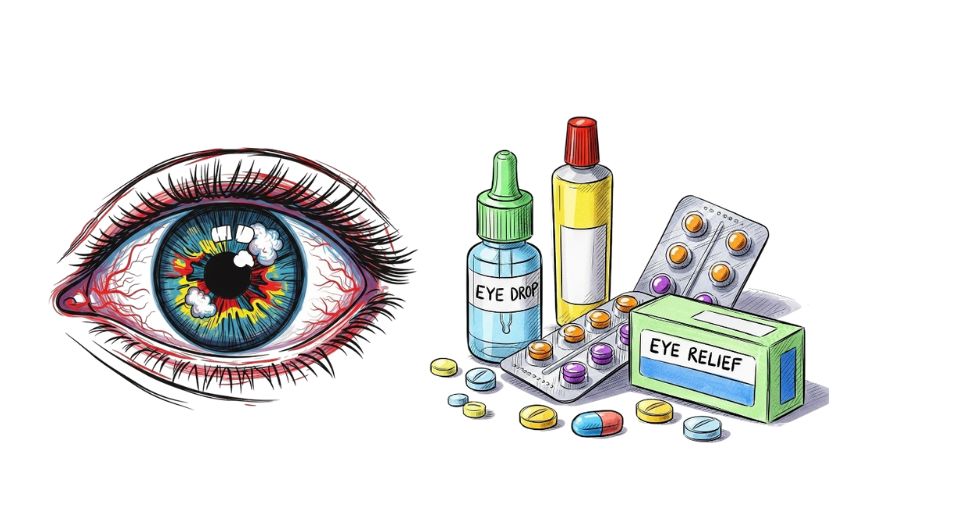
Sep 19, 2025

The Global Chronic Eye Diseases Market, a vital component of the healthcare sector, is at the cusp of technological innovation, medical knowledge, and the increased healthcare demands of the aging worldwide population. In this fast-paced environment, eye diseases that last for a long period of time create challenges and opportunities. This Metastat Insights report discusses the environment of the Chronic Eye Diseases Market, illuminating the existing status, trends, and drivers of its path. The Chronic Eye Disease Market comprises a comprehensive range of eye diseases that persist in an individual over time. This includes disorders such as glaucoma, diabetic retinopathy, age-related macular degeneration (AMD), and others. These are typically long-term and often times require long-term treatment, and are most often associated with age, heredity, or other diseases.
Chronic eye conditions are more common than ever because of certain characteristics of the population, for example, due to the aging population. In particular, glaucoma and AMD have been increasing in prevalence among aging populations. While early treatment has increased the size of this market due to improved medical diagnostics and a higher level of awareness among the population, the OTC eye care consumer market has still increased in size.
One of the most significant features of the Chronic Eye Diseases Market is the inextricable presence of technology. Newer technologies in diagnostic tools, surgery, and medications have significantly improved the cure and control of such illnesses. For instance, the advent of minimal invasive surgery procedures as well as the design of medication that arrests the development of diseases like AMD has transformed patient results.
The creation of drugs for chronic ocular disease has been one of the medical advances in this regard. Anti-VEGF medications, specifically, have revolutionized the treatment of diabetic retinopathy (DR) and age-related macular degeneration (AMD). The drugs exert their effect by inhibiting the growth of new pathological vessels in the eye, which are hallmarks of the two diseases. The drugs not only arrested disease progression but also enhanced vision for many individuals. Diet, smoking, and exercise are lifestyle factors that affect risk of developing and progression of chronic eye disease.
For instance, those who smoke can develop AMD and those who eat diets rich in omega-3 fatty acids and antioxidants are likely to develop fewer of such and other chronic eye diseases. These have promoted more emphasis on the utilization of preventive interventions as well as lifestyle adjustments to improve treatment planning within a comprehensive approach as chronic eye disease management. These factors have led to a greater focus on the use of preventive interventions and lifestyle modifications to enhance treatment planning as part of an overall approach as chronic eye disease management. Chronic eye disease impacts and effects quality of life for those who live with these disorders and represents a significant burden to healthcare systems.
There is a financial cost associated with diagnosis, treatment, and chronic care, and therefore the economic model defined has an important role in highlighting the value of early diagnosis intervention in order to add value in reducing chronic eye disease costs later. Currently, the Chronic Eye Disease Market has seen a shift in paradigm over the past few years to patient-centered care. In addition, the eye doctors are seeing their focus shift towards treatment planning that is based on the health and personal interests of the patient themselves. Personalized medicine and shared decision-making are increasingly becoming a characteristic of how chronic eye diseases are approached, so that patients remain actively involved in their own care.
In conclusion, the Chronic Eye Diseases Market is also a field that is dynamic and fluid within the health care industry. With an aging global population and an increase in conditions such as glaucoma, diabetic retinopathy, and AMD, this market for treatment continues to expand. The areas of technology, pharmaceutical developments, lifestyle, and health care that are centered on the patient will be instrumental in directing further advances.
With the market for chronic eye disease treatment and management continuing to increase, it will require new collaborations and integrated work amongst employers, health care professionals, researchers and policy and decision makers. The collaborative efforts should focus on improving diagnostics, developing new treatments, facilitating preventative care efforts, and managing economic ramifications of chronic eye conditions. In the end, the Chronic Eye Disease Market is where the latest medical science meets human experience, and that from new and emerging advancements from within health care can improve the lives of millions of individuals suffering from Chronic Eye Diseases.
Drop us an email at:
Call us on:
+1 5186502376
+91 73850 57479